I like moles, so much so that their tunnels and molehills in my backyard don’t even bother me, it just makes me happy knowing that they’re there. But I’ve always preferred a biodiverse yard over a manicured one. Moles can actually be beneficial to lawns and gardens too, by aerating the soil and consuming garden pests like slugs.
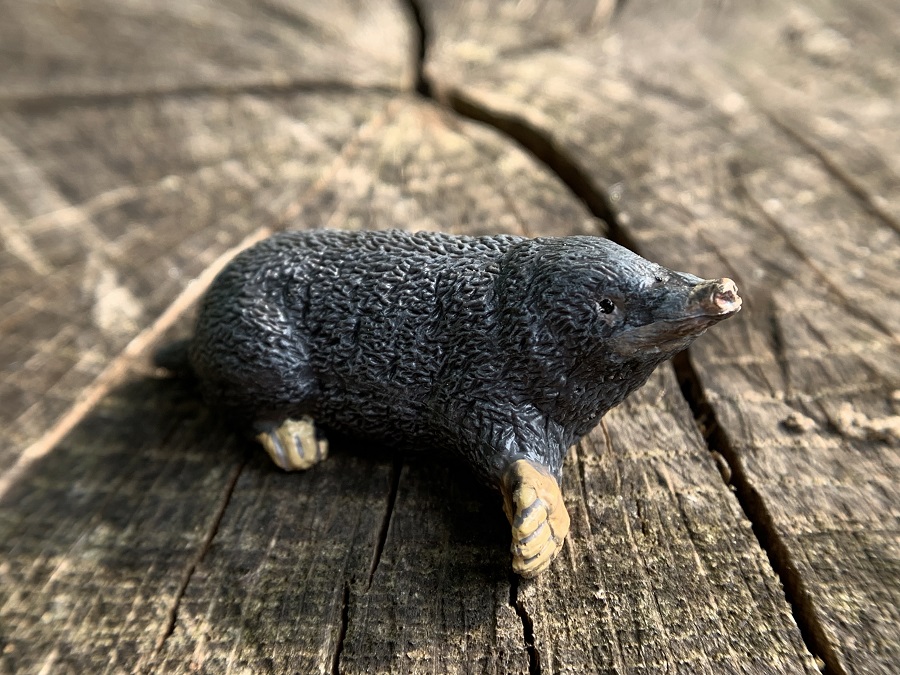
Today we’re reviewing the Papo European mole (Talpa europaea). The European mole is also known as the common or northern mole and aside from a couple Kaiyodo figures representing Japanese species it is the only species of mole reproduced in plastic. Why the spectacularly bizarre star-nosed mole has been neglected thus far confounds me. When I was a kid I found a dead star-nosed mole that had drowned in our pool, and I have been fascinated by that species ever since. I still have its skull on display in my curiosity cabinet.
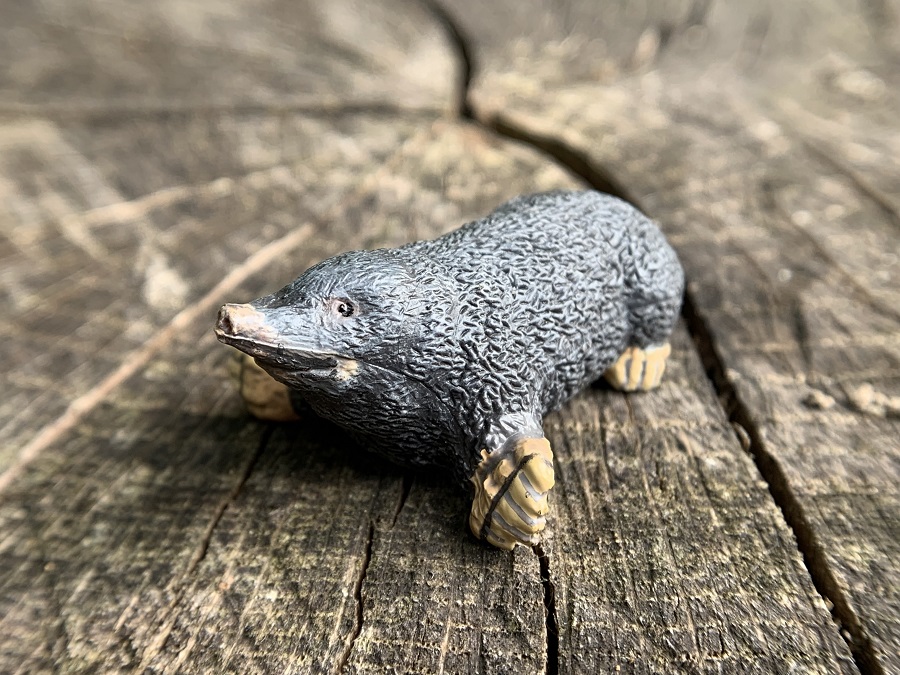
That the European mole is so popular as toys shouldn’t come as a surprise since most western animal figure companies are headquartered in Europe. Toy Animal Wiki documents 8 European mole figures but the one we’re looking at today is by far the best, and the only one currently in production, having originally been released in 2020.
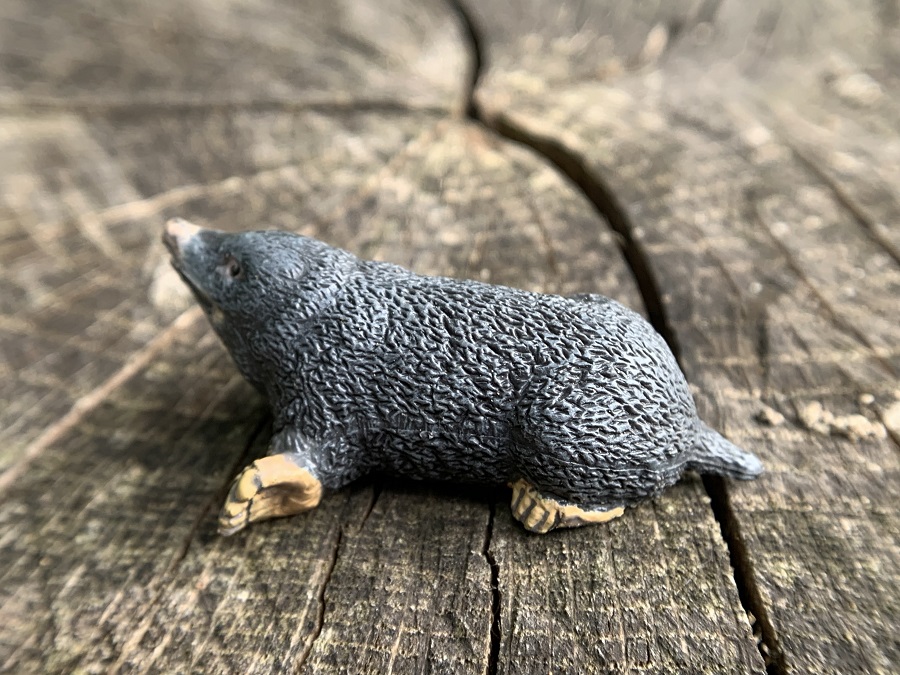

The European mole ranges throughout Europe and into western Siberia, as far north as the UK and Scandinavia, and as far south as northern Greece. The European mole has toxic saliva which it uses to subdue worms. Worms are their preferred diet, but they also eat other subterranean invertebrates and even the occasional mouse or shrew. The European mole reaches a maximum length of 6.5” (16 cm) while the Papo figure measures 2” (5.08 cm), putting it at about 1/3.25 in scale.
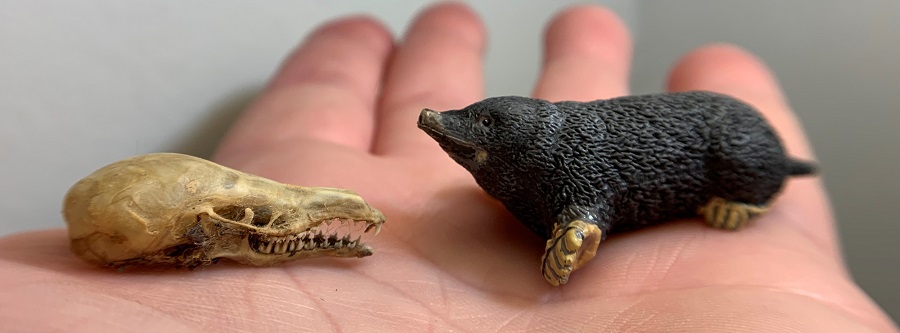
The Papo mole is presented in a static pose with its large forepaws splayed out beside it and its head lifted upwards, a cute little fat roll is present behind the lifted head. The body is cylindrical in shape with a short tail, the nose pointed and tubular, eyes are reduced to minute pinpricks, and the hindlimbs reduced in size also. Overall, it displays the various subterranean adaptations of the mole quite well, although in life you likely wouldn’t be able to see the eyes as they would be hidden behind fur.
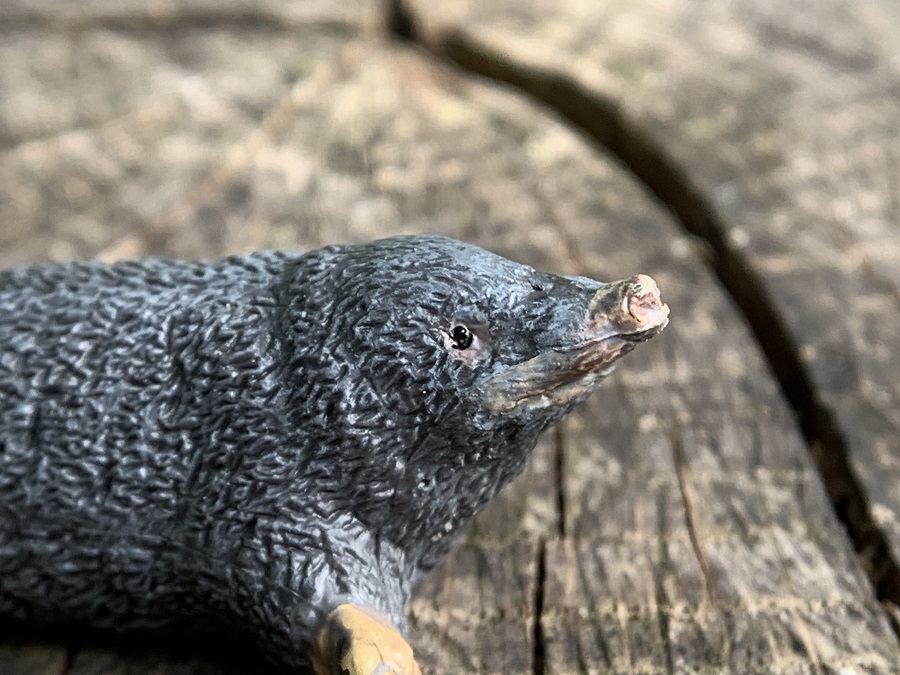
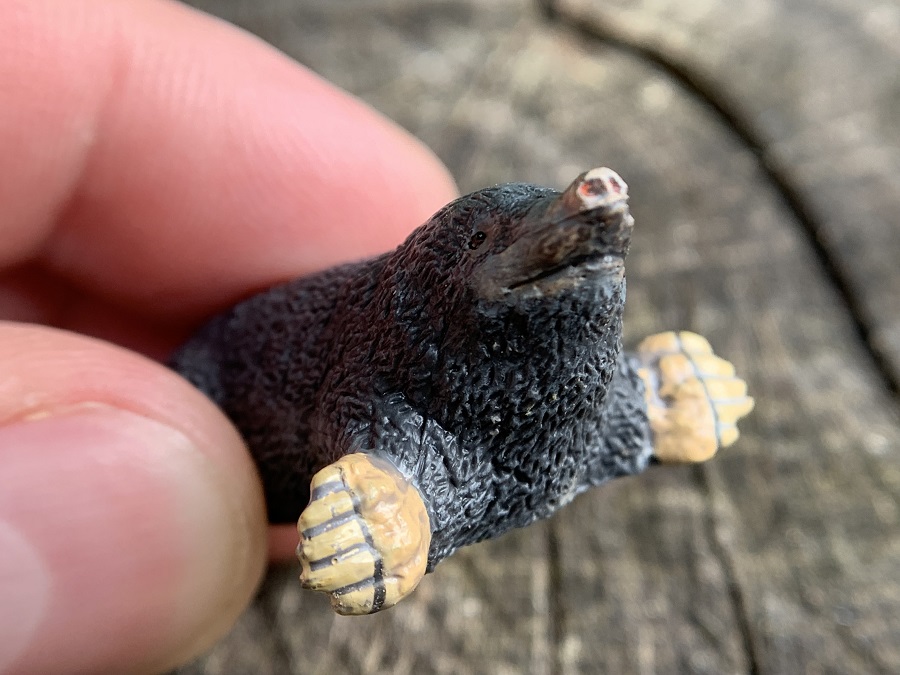
Moles may look like rodents, but they belong to the order Eulipotyphla along with shrews, hedgehogs, and solenodons. True moles belong to the family Talpidae and are unrelated to other groups like the golden moles and marsupial moles.

As indicated by the stated length the Papo mole is exceptionally small, but it is also well crafted. Five digits are clearly sculpted on its enormous paws, used for tunneling through soil in life. Actual moles have an extra “thumb” known as a prepollex, which is a sickle shaped bone that grows out of the wrist. The pelt is nicely detailed and in life the mole’s fur is short, dense, and has a velvet-like texture. Unlike other mammals, moles cannot be “brushed the wrong way” and this allows them to move smoothly underground, forwards, and backwards.
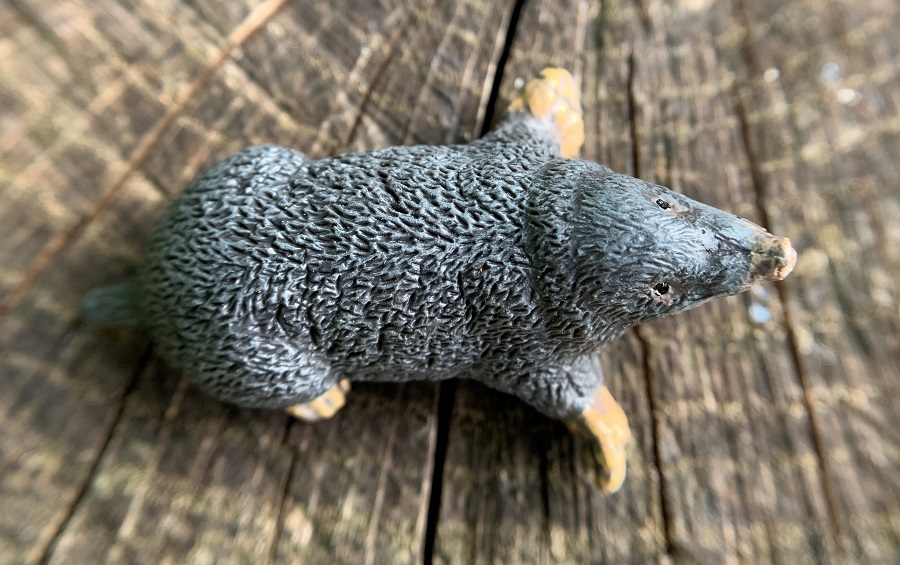

The Papo mole is painted dark gray but actual European moles can also be light gray, white, tan, or black. The hairless snout and area around the mouth are painted pink, and the paws are all painted pink with tan claws. The paws are coated with a glossy finish.
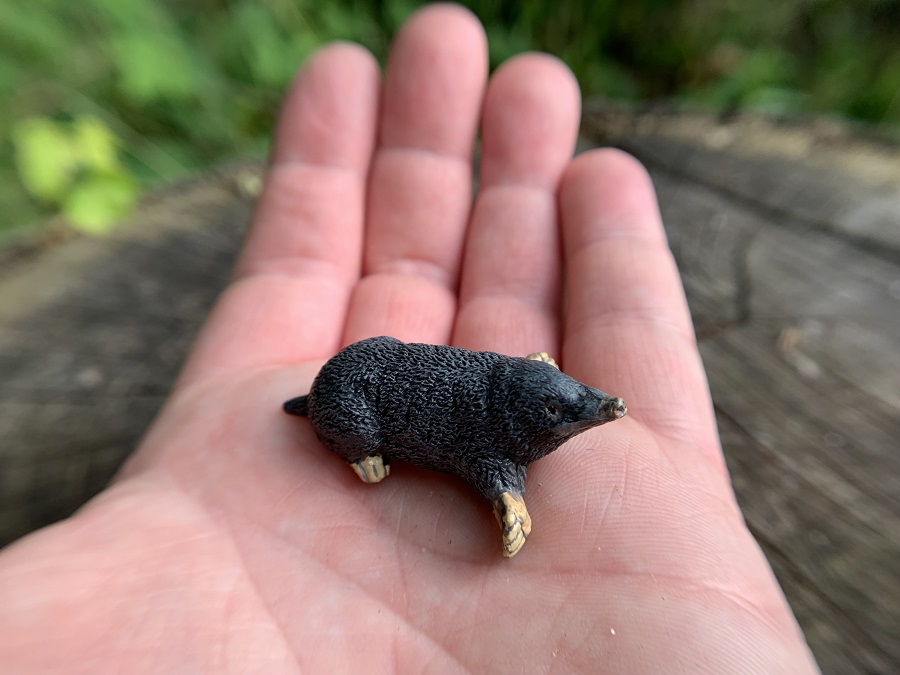
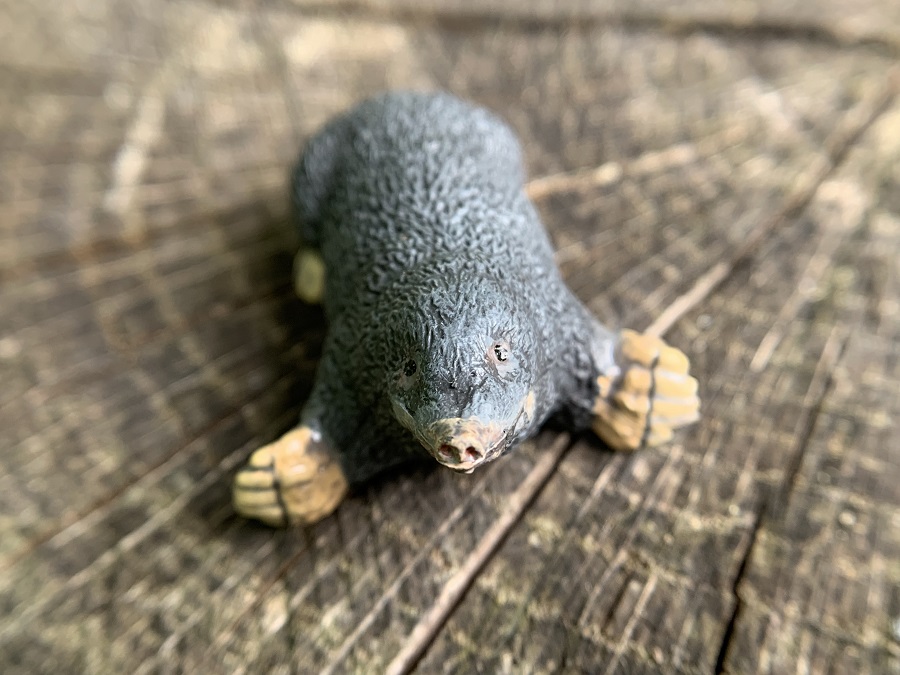
The Papo mole is a delightful little figure that’s diminutive size and peaceful expression give it a whimsical quality. It also happens to be the best figurine of a mole produced by any company. If it’s the only mole I ever have in my collection I’ll be satisfied, but I still want a star-nosed mole. The Papo mole is currently in production and retails for about $4.99.

Disclaimer: links to Ebay and Amazon on the AnimalToyBlog are affiliate links, so we make a small commission if you use them. Thanks for supporting us!




This was an instant purchase for me when it came out! The size is the same as many of the Asian moles made by Kaiyodo, so one have have a diverse collection of moles at approximately the same size!
There was a mole figure from Bullyland back when they made figures worth buying. Larger than the Papo, but very well done. And of course, long out of production.